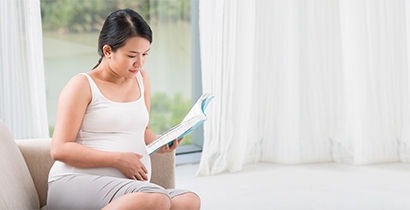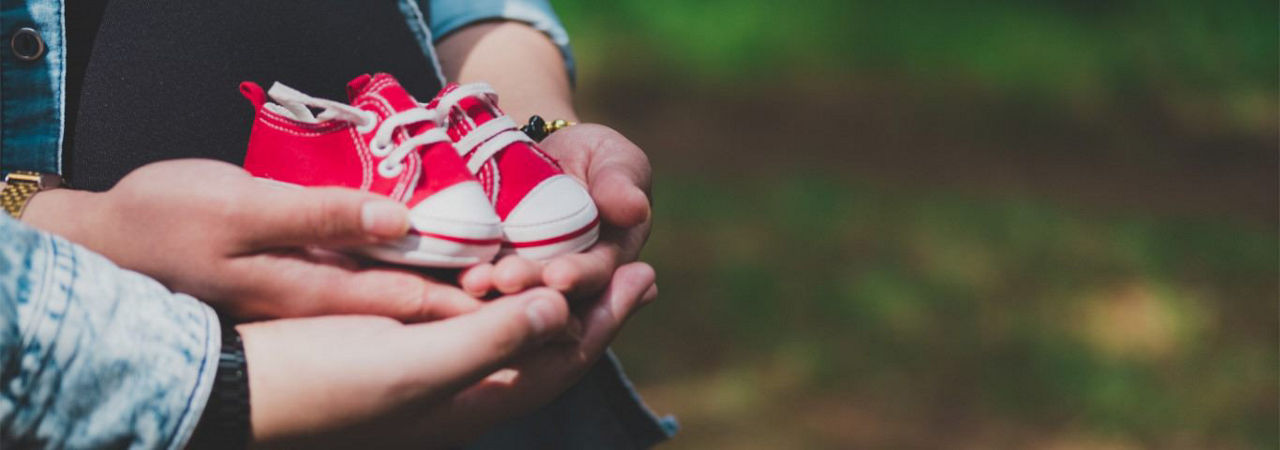Breastfeeding is the best for babies and a healthy diet / maternal nutrition is important when breastfeeding. A decision not to breastfeed can be difficult to reverse. Infant formula is suitable from birth when babies are not breastfed. It is recommended that all formula milks be used on the advice of a doctor, midwife, health visitor, public health nurse, dietitian, pharmacist, or other professional responsible for maternal and child care and the financial implications should be considered. All preparation and feeding instructions should be followed carefully as inappropriate preparation could lead to health hazards.
The Stages Of Labour
What are the three stages of labour?
Labour is the physical process during which your uterus contracts and your cervix opens to allow your baby to come out into the world.
The first stage consists of the early, active and transitional phases. Your cervix will dilate throughout these phases to a full ten centimetres. The second stage of labour is the pushing stage when you actually deliver your baby, and third stage is when you deliver your placenta.
The first stage
The first stage of labour can last for hours, or sometimes even for days, so the first thing to remember is not to panic when the signs start.
Early labour feelings
For many women, the very first sign of getting ready for labour is a cramping feeling - a bit like period pains. You may also feel bloated, constipated or have a bit of pain in your tummy or back. Some women could feel sick, have diarrhoea or nausea.
During the early stages of labour your digestive system slows down, so it’s a good idea to only have light meals like soup, cereal or toast and drink plenty of water.
The feelings of discomfort may not feel like anything unusual at first, but if you are in labour they will gradually develop into more regular and intense pains, otherwise known as contractions.
Getting your show
A plug of mucus has been sealing off your cervix while you’ve been carrying your baby. During the early stages of labour or even before, this plug may come free and appear as a thick sticky blood-tinged discharge in your underwear or in the toilet. This is known as a ‘show’.
Not all women get a show in the early stages, so don’t worry if yours hasn’t appeared yet. Your plug will come out naturally at some stage during your labour.
Breaking water
The ‘water’ is actually the amniotic fluid that surrounds your baby throughout pregnancy. When your body’s getting ready to go into labour, the sac around the fluid tears and the fluid comes out of your vagina. Some women say they hear a little ‘pop’ when it happens. Some describe the release of fluid as a trickle, others as a gush.
If your water do break in the early stages of labour the risk of infection is increased, so it’s very important to keep your vaginal area very clean. Don’t put anything into your vagina, like a tampon and don’t have sex or any hot baths.
If your water has broken you should also contact your doctor straight away, so they can check if you are in labour.
Contractions
Contractions are a tightening and relaxing of the muscles in your tummy and back and they’ll feel stronger than the irregular ones you may have experienced during pregnancy.
If you’re in labour you’ll start to experience contractions at increasingly shorter intervals and they’ll become longer and stronger in intensity.
A typical pattern for your early phase contractions begins by lasting about 40 seconds and coming every ten minutes. By the time you’re ready to give birth; the contractions will last for more than a minute and come every 30 seconds. These timings are just a guide; they will vary from person to person.
Making the first stage more comfortable
For advice about how to have a more comfortable labour, read our tips forgetting through labour or if you want to know how to keep your energy levels up read our article food & drink during labour.
The second stage
The second stage of labour begins when your cervix has dilated to ten centimetres. And it ends with the birth of your baby!
If this is your first baby, the second stage may still take an hour or even longer to complete. But if you’ve had one or more babies already, it may take as little as five minutes.
Pushing your baby out
Your body will tell you when to push – in fact the urge will probably be overwhelming and pretty difficult to resist!
Once your baby’s head comes through the opening of your vagina the doctor will probably ask you to stop pushing and to pant instead. It’s a delicate stage and being gentle is important as it helps reduce the risk of tearing. You’ll gently push your baby out on the next contraction.
At last your baby will be born and once they’ve been checked you’ll be able to say hello to one another. Congratulations!
The third stage
It might seem a bit odd that you’ve still got another stage of labour to go after your baby has been born! That’s because there’s still a little bit of work left to do - delivering the placenta. Don’t worry, your doctor will stay with you and guide you through it.
Delivering the placenta
Your doctor will offer you an injection to help with the delivery of the placenta. If you choose to have the injection, delivery will probably take about 5 –15 minutes. But if you decide to deliver naturally it could take up to an hour.
You’ll find that the contractions will start again but they won’t be nearly as intense as during second stage labour. You’ll gently push the placenta down and out of your vagina.
Once delivered, the placenta will be checked over, and your doctor will also feel your tummy to check that your uterus has started to contract now the placenta has gone.


Ask Our Careline
Whatever’s on your mind, we’re here to help



